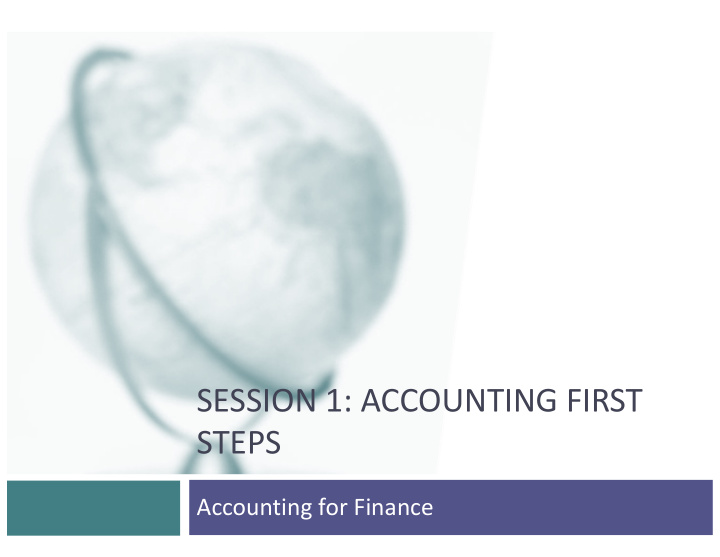



SESSION 1: ACCOUNTING FIRST STEPS Accounting for Finance
The Accountant’s Role o In my view (and many accountants will disagree), it is the role of accounting o To check transactions and operations, as they occur o To record them in a consistent manner o To report the results in standardized form o Much as accounting wants to makes itself more relevant and central to businesses, it is not the role of accounting: o Forecast the future, no matter how tempted. o Value assets or operations. o Bluntly put, an accountant is a historian, chronicling events that have already occurred, not predicting the future. 2
The Accounting Questions.. ¨ What do you own? List out the assets that a business has invested in, and how much it spent on those investments and perhaps what these assets are worth today . ¨ What do you owe? Specify the contractual commitments that a business has to meet, to stay in business. Simply put, this should include all borrowings, but is not restricted to those. ¨ How much money did you make? Measure the profitability of the business, both with accounting judgments on expenses, and based upon cash in and cash out. 3
The Accounting Statements I The balance sheet , which summarizes what a firm owns and owes at a point in time, as well as an estimate of what equity is worth (through accounting eyes). I The income statement , which reports on how much a business earned in the period of analysis, while providing detail on revenues and expenses. I The statement of cash flows , which reports on cash inflows and outflows to the firm during the period of analysis and allows for a measure of cash earnings (as opposed to accounting earnings) and cash flows. 4
1. Balance Sheet 5
2. Income Statement Item Explanation Start with Revenues Accountant's estimate of the revenues/sales generated by any transactions made the business during the period. Expenses associated with producing products or services that Net out Cost of Goods Sold represent top line sales To get Gross Profit Production profitability Includes selling, general and administrative and other Net out Other Operating Expenses expenses associated with operations, but not directly tied to producing goods and services To get Operating Profit Profitability of business Expenses associated with the use of non-equity capital, Net out Financial Expenses especially debt. To get Taxable Income Income for equity investors, prior to taxes Net out Taxes Taxes due on taxable income To get Net Income Income for equity investors, after taxes 6
3. Statement of Cash Flows 7
The Interconnections 8
The Accounting Standards q Accounting is a rule-driven process , and over time, those rules have been formalized, especially for publicly traded companies. This formalization is driven by two considerations: q Standardization , to allow for comparisons across companies q First principles , to ensure that earnings, asset value and cash flows measure what they are supposed to measure. q While accounting standards around the world remain different, they have converged (for the most part) around two standards: q GAAP (Generally Accepted Accounting Principles), representing rules developed by FASB (Financial Accounting Standards Board) to cover US financial reporting. q IFRS (International Financial Reporting Standards) , representing rules developed by IASB (International Accounting Standards Board) for companies listed globally, followed by about 90 countries as of 2020. 9
The Bottom Line ¨ The raw material that we use to do financial analysis and valuation almost always takes the form of accounting statements. ¨ Consequently, it behooves us all to understand how accountants think (even if we disagree with them) in putting these statements together. ¨ The challenge is that accounting thinking keeps changing, as we move through time, and we have to understand those changes (both the what and the why), to keep up with them. 11
Recommend
More recommend